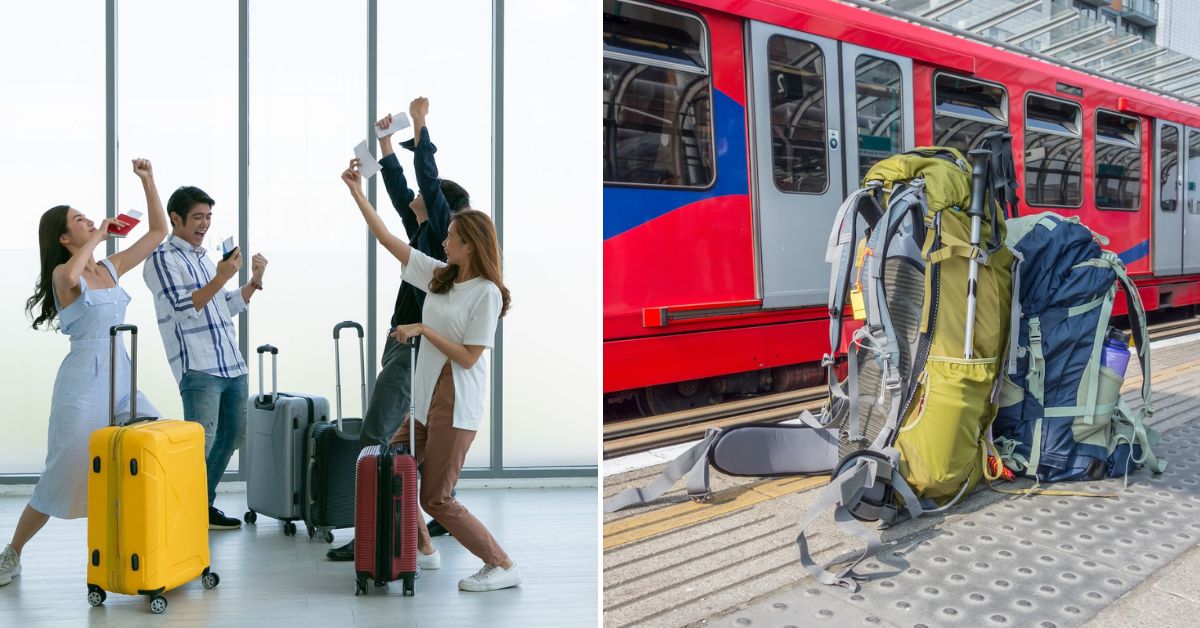Long-term travel is no longer just for backpackers and digital nomads. In 2025, it’s becoming a lifestyle choice for many who crave freedom, flexibility, and new experiences. With remote work on the rise and travel resources more accessible than ever, exploring the world over months or even years is easier than it used to be.
This guide to long-term travel will help you plan your extended journey with confidence. It covers essential tips, budgeting strategies, packing insights, and lifestyle advice to keep you prepared and stress-free. Whether you're going solo or with a partner, staying in hostels or working from beach cafés, long-term travel offers an enriching way to see the world.
Use this guide to long-term travel in 2025 as your foundation. It’s designed for clarity, practicality, and real-world use, ensuring you make the most of every stop along your path.
Define Your Travel Goals and Timeline
The first step in any guide to long-term travel is defining your purpose. Are you travelling to work remotely, learn new skills, taking a break, or exploring the world? Your reason for travelling shapes every decision you make, from your budget and destinations to the pace of your journey.
Once your goal is clear, set a rough timeline. Will you travel for three months, six, or longer? Knowing your timeframe helps with planning but remember to stay flexible. One of the best parts of long-term travel is the freedom to adapt. You might fall in love with a place and stay longer or change course unexpectedly. Keep your plans open, and let the journey unfold naturally.
Create a Realistic Travel Budget
Budgeting is one of the most important parts of any guide to long-term travel. Your finances directly impact how long you can stay on the road and where you can go. Start by calculating your expected monthly expenses, including accommodation, meals, local transport, insurance, activities, and any ongoing bills.
Multiply this by the number of months you plan to travel, and always add a buffer for emergencies or last-minute adventures. Unexpected costs will arise, and having that safety net can make all the difference. Use budgeting tools like travel spreadsheets or apps to track your spending.
Staying aware of your financial situation allows you to travel longer, stress less, and enjoy the experience more. Being organised with your money is what turns a dream trip into a sustainable lifestyle.
Choose Destinations That Match Your Budget
Choosing the right destinations can greatly impact how far your budget takes you. In any smart guide to long-term travel, it's recommended to focus on countries that offer strong value for money. Regions like Southeast Asia, Eastern Europe, and parts of South America allow you to live comfortably at lower daily costs.
You can stretch your funds without sacrificing quality experiences. To balance things out, mix in shorter stays in more expensive places like Switzerland, Japan, or Scandinavia. Spend more time in affordable regions and less in pricey cities.
This strategy gives you the best of both worlds unique cultural experiences and financial control. Planning your route with this in mind ensures your travel is both fulfilling and financially sustainable. It’s all about maximising value without missing out.
Travel Slowly to Save Money
Travelling slowly is one of the smartest strategies in any guide to long-term travel. The longer you stay in one place, the less you spend on transport, and you’re more likely to find affordable, longer-term accommodation options.
Many guesthouses, hostels, and Airbnb hosts offer discounts for week- or month-long stays. Beyond the cost savings, slow travel gives you the chance to truly connect with your surroundings. You can explore local culture at a comfortable pace, settle into routines, and enjoy a more relaxed experience. It also helps prevent burnout from constant packing and moving.
Embracing slow travel means focusing on quality over quantity, spending time deeply experiencing a few places rather than rushing through many. It makes your journey more sustainable, enjoyable, and memorable.
Pack Smart and Light
When you're travelling for months, packing smart becomes essential. Focus on bringing only what you truly need. Choose versatile clothing that can be mixed and matched to create multiple outfits. Neutral tones and functional layers work best.
A minimalist approach is key in any guide to long-term travel, you’ll appreciate it every time you move locations. Pack for your starting climate and adapt as you go; it’s easier to buy extra items locally than to carry excess weight. Keeping your luggage light improves mobility, reduces strain, and makes transitions between destinations more efficient. Smart packing saves time, space, and energy.
Guide to Long-Term Travel in 2025 – Essentials Checklist
| Tip | Focus Area | Why It Matters |
|---|---|---|
| 1 | Set Goals & Timeline | Keeps your trip focused and flexible |
| 2 | Budget Wisely | Controls costs and supports sustainability |
| 3 | Pick Smart Destinations | Saves money and extends travel time |
| 4 | Travel Slowly | Reduces expenses and enhances experiences |
| 5 | Pack Light & Smart | Boosts mobility and reduces stress |
| 6 | Get Insurance | Ensures health and trip protection |
| 7 | Work or Volunteer | Supports income or budget-saving options |
| 8 | Stay Digitally Secure | Keeps your data and contacts safe |
| 9 | Prioritise Wellbeing | Maintains health and avoids burnout |
| 10 | Be Flexible & Open-Minded | Encourages meaningful and spontaneous moments |
Choose the Right Travel Insurance
Travel insurance is essential for any extended trip. One of the most crucial points in any guide to long-term travel is making sure you're properly covered. Look for a policy that includes healthcare abroad, emergency evacuation, trip interruptions, and personal belongings.
The insurance should cover the full length of your journey, even if your plans change. Don’t rush this step take time to compare providers, check what’s included, and read the fine print. Choose a company with solid global support and reliable customer service.
Medical costs or lost items can quickly become expensive without proper coverage. With the right insurance, you can travel with confidence, knowing you're protected if something goes wrong. It’s a small investment that brings huge peace of mind.
Work Remotely or Volunteer Abroad
Sustaining a long-term trip often means finding ways to earn or save while on the road. A dependable guide to long-term travel will always include options like remote work or volunteering. Many travellers now teach online, do freelance writing, manage social media, or offer virtual assistance.
These flexible jobs allow you to work from anywhere with a good internet connection. Alternatively, volunteering through trusted platforms can provide free accommodation and meals in exchange for your time, whether it's working on a farm, helping in hostels, or supporting community projects.
These opportunities not only stretch your budget but also enrich your travel experience. Earning or saving as you go makes extended travel more sustainable and rewarding.
Stay Connected and Backed Up
Reliable internet is essential if you’re working or managing your trip online. Carry a backup drive and store documents in the cloud.
This guide to long-term travel also suggests using VPNs for safe browsing and communication apps like WhatsApp or Zoom to stay in touch with loved ones.
Look After Your Mental and Physical Health
Long-term travel is exciting, but it can also take a toll on your body and mind. A solid guide to long-term travel always prioritises health. Make time to rest, eat balanced meals, and stay active even light walks help. Build downtime into your schedule so you don’t feel rushed or burnt out. Carry a small first aid kit for minor issues, and make sure you’re up to date with necessary travel vaccinations.
It’s also smart to know where local clinics are in case you need medical help. Mental health matters too. Homesickness is normal talk to fellow travellers, call loved ones, or write about your experiences. Take a break when needed. Looking after your wellbeing ensures you can enjoy the journey for as long as you planned.
Embrace Flexibility and Unexpected Moments
Flexibility is one of the most valuable traits for anyone embracing life on the road. This guide to long-term travel reminds you that unpredictability is part of the journey. Things won’t always go as planned, trains get delayed, weather shifts, or a quick stop turns into a month-long stay. That’s the beauty of long-term travel.
Say yes to new opportunities, but also trust your instincts when something doesn’t feel right. Learn to adapt without stress. Embrace the detours, because they often lead to your most memorable experiences. Every unexpected moment adds character to your story. Let go of rigid expectations and allow the journey to shape itself. That’s where the magic happens.
Final Words
Long-term travel isn’t just about taking a long break, it’s a lifestyle shift. It challenges you, shapes you, and teaches you how to adapt, grow, and see the world from new angles.
A thoughtful guide to long-term travel shows that this journey is about more than destinations; it’s about building resilience, gaining perspective, and learning to live with less while experiencing more.With smart planning, flexibility, and an open heart, the months ahead become rich with growth, surprises, and meaningful connections.
Let this guide to long-term travel in 2025 be your steady resource as you move through new landscapes and cultures. Stay curious, travel light, and welcome each day as a fresh page in your personal adventure. It’s more than travel it’s a journey into the best version of yourself.







